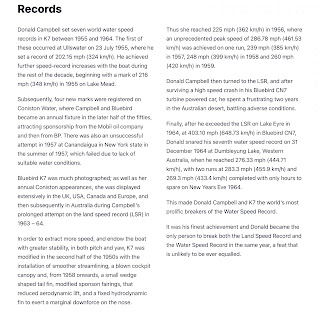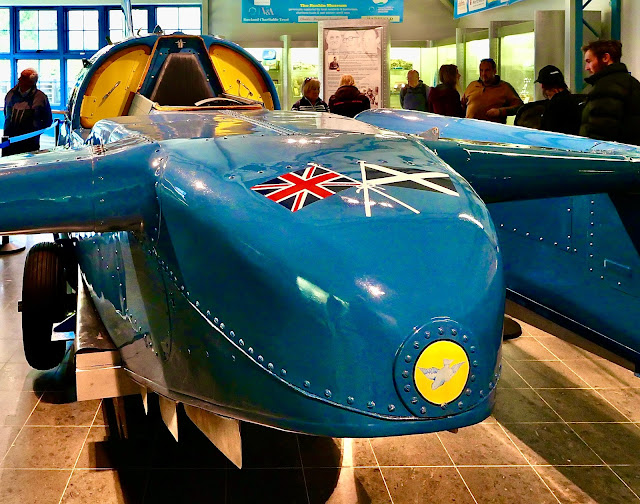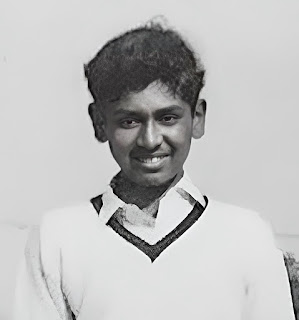CHARNEY HALL Bluebird K7
Comics were sent weekly by parents to the school by Royal Mail, an additional but very essential expense which with the regular exchange of letters maintained the sole contact with home.
Charney Hall was not far from Coniston Water. The lake that was eventually selected for Donald Cambell’s final ill-fated attempt on the world water speed record. It has not been recorded whether some of the boys at Charney Hall attended that day but it is certain that masters and pupils would have been acutely aware of the record attempt and later that day, the terrible news that followed.
Donald’s father’s propellor driven boat Bluebird K4 had suffered structural failure in 1951 so in 1952 a new jet hydroplane Bluebird K7 was commissioned. K7 was not fitted with the original engine for the world water speed record attempt on Coniston Water but was replaced with a lighter and more powerful Bristol Siddeley Orpheus engine (on loan from the MoD with spares taken from Campbell’s Folland Gnat jet aircraft) which developed 4,500 pound-force (20 KN) of thrust. After some initial slower runs the boat was transported to Coniston in November 1966 where, after stringent environmental checks including the suitability of the surface of the water, the date of 4th January 1967 was agreed for an attempt to raise the world record to over 300mph.
The rest, they say, is history. A schoolboy and national hero died that day and the investigations to locate the boat, the possible cause(s) of the accident and the death of Donald Cambell began.
Bluebird’s story has recently turned full circle with her return home to the Coniston Ruskin Museum on 9th March 2024, after many years of argument and debate about her future. Nevertheless after her recovery in March 2001, her complete and inspiring restoration by the engineer Bill Smith and his team have been meticulous and will enable Bluebird K7 to undertake guest appearances on Coniston Water in the future, albeit at a much reduced speed.
https://en.wikipedia.org/wiki/Donald_Campbell
https://en.wikipedia.org/wiki/Bluebird_K7
24 March 2024 : Visit to The Ruskin Museum, Coniston
Here are some more of my photographs of Bluebird K7, now ‘at home’ and occupying her reserved space in the Campbell Extension in this amazing museum. This is set back on the left hand side, off Yewdale Road (A593) near the centre of the village (the bridge). Her new reconditioned Orpheus jet engine lies alongside and is not yet installed. In addition the original is displayed, which was beyond repair but which miraculously acted as a sacrificial anode for the boat’s aluminium streamlined body in the years that she was submerged, and protected it from excessive corrosion.
It is proposed that Bluebird may be launched onto Coniston Water in 2026 until then she will remain on display in the museum. Her proposed speed would be limited to around 150mph and is subject to the Museum obtaining the requisite permissions.
Note: John Ruskin should not be missed…some information and displays are included about the Collingwood family. Robin George Collingwood attended Charney Hall (1889-1903) ref: ‘Charney Hall Old Boys 1’. His father W G Collingwood acted as John Ruskin’s secretary and was an accomplished artist and archaeologist in his own right. He was also responsible for founding the museum at Coniston in 1901. https://en.wikipedia.org/wiki/W._G._Collingwood
Want to celebrate your visit with a tea and scone? The Green Housekeeper Café, just across the road is highly recommended! The best home-made scones are baked daily, served hot, with tasty home-made raspberry jam, butter and/or thick cream and a pot of tea with hot water all served by friendly staff!
The bow, up close and personal
Scale models of Bluebird K7 on display




















Comments